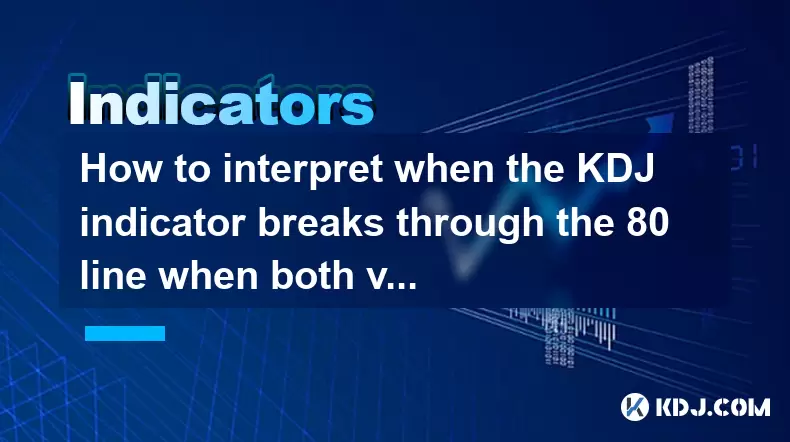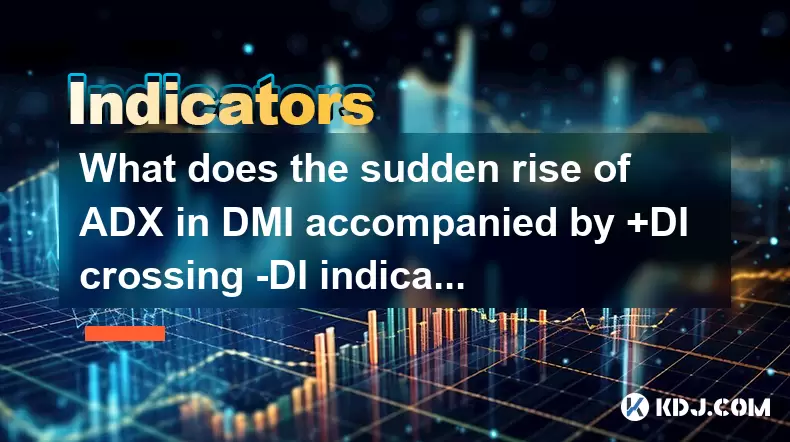-
 Bitcoin
Bitcoin $117400
1.93% -
 Ethereum
Ethereum $3747
3.63% -
 XRP
XRP $3.157
3.09% -
 Tether USDt
Tether USDt $1.000
0.02% -
 BNB
BNB $783.3
3.19% -
 Solana
Solana $186.6
5.64% -
 USDC
USDC $0.9999
0.01% -
 Dogecoin
Dogecoin $0.2375
5.42% -
 TRON
TRON $0.3185
1.32% -
 Cardano
Cardano $0.8191
3.28% -
 Hyperliquid
Hyperliquid $44.43
5.76% -
 Sui
Sui $3.995
9.84% -
 Stellar
Stellar $0.4396
6.27% -
 Chainlink
Chainlink $18.26
4.83% -
 Hedera
Hedera $0.2646
11.88% -
 Bitcoin Cash
Bitcoin Cash $553.5
5.55% -
 Avalanche
Avalanche $24.13
4.73% -
 Litecoin
Litecoin $113.3
1.77% -
 UNUS SED LEO
UNUS SED LEO $8.975
0.11% -
 Shiba Inu
Shiba Inu $0.00001405
5.69% -
 Toncoin
Toncoin $3.319
7.46% -
 Ethena USDe
Ethena USDe $1.001
0.02% -
 Uniswap
Uniswap $10.44
4.98% -
 Polkadot
Polkadot $4.098
4.31% -
 Monero
Monero $328.6
1.87% -
 Dai
Dai $1.000
0.01% -
 Bitget Token
Bitget Token $4.561
2.76% -
 Pepe
Pepe $0.00001261
5.29% -
 Aave
Aave $296.8
4.02% -
 Cronos
Cronos $0.1335
3.28%
How to interpret when the KDJ indicator breaks through the 80 line when both volume and price rise?
When the KDJ crosses above 80 with rising price and volume, it signals strong bullish momentum, not an immediate sell—especially if confirmed by trend, volume, and market context.
Jul 26, 2025 at 12:47 am

Understanding the KDJ Indicator and Its Components
The KDJ indicator is a momentum oscillator widely used in technical analysis within the cryptocurrency market. It consists of three lines: the %K line, the %D line, and the %J line. The %K line represents the current closing price relative to the price range over a specified period, typically 9 periods. The %D line is a moving average of %K, usually a 3-period SMA, and the %J line is derived as 3×%K – 2×%D, making it more sensitive to price changes. When the KDJ crosses above the 80 level, it traditionally signals that the asset is entering overbought territory. This suggests that buying pressure has pushed the price to a high level relative to recent performance, potentially increasing the likelihood of a pullback.
Interpreting the 80-Line Breakthrough in Conjunction with Price and Volume
When the KDJ breaks through the 80 line while both price and volume are rising, this creates a unique signal that demands deeper scrutiny. In most scenarios, an overbought reading would caution traders about an impending reversal. However, when price continues to climb and trading volume expands, it indicates strong market participation and sustained bullish sentiment. This combination may suggest that the rally is not driven by speculation alone but by genuine accumulation from informed participants. The rising volume confirms the strength behind the price move, reducing the likelihood of a false breakout. Therefore, the KDJ crossing 80 in this context should not be interpreted as an immediate sell signal but as a sign of intensifying bullish momentum.
Assessing Market Context and Trend Confirmation
Before acting on the KDJ signal, it's essential to assess the broader market environment. A break above the 80 threshold during a strong uptrend, especially after a consolidation phase, can reflect a continuation pattern rather than exhaustion. To confirm this, traders should examine:
- Whether the cryptocurrency is trading above key moving averages such as the 50-day or 200-day EMA
- If higher highs and higher lows are being formed on the price chart
- Whether on-chain metrics such as exchange outflows or rising active addresses support accumulation
- The presence of positive macro catalysts, such as ETF approvals or exchange listings
When these elements align with the KDJ breakout, the probability increases that the overbought condition is sustainable in the short term. This does not negate the risk of a correction but implies that the upward trajectory may persist with intermittent pullbacks.
Volume Analysis: Validating the KDJ Signal
Volume plays a critical role in validating the significance of the KDJ’s move above 80. A genuine breakout accompanied by rising volume suggests that new capital is entering the market. To analyze volume effectively:
- Compare current volume levels to the 30-day average volume; a spike above this average strengthens the signal
- Look for volume bars increasing in tandem with price during the KDJ ascent
- Watch for volume divergence; if volume starts to decline while price and KDJ remain high, it may indicate weakening momentum
In cryptocurrency trading, volume is especially important due to the market’s susceptibility to manipulation. A surge in volume from decentralized exchanges (DEXs) or major centralized platforms like Binance or Coinbase adds credibility to the move. Tools such as TradingView’s volume profile or on-chain volume data from Glassnode can offer deeper insights into whether the volume is retail-driven or institutional.
Practical Trading Strategy Using KDJ, Price, and Volume
Traders can design a responsive strategy when observing the KDJ crossing 80 with rising price and volume. The goal is to capture momentum while managing risk. A structured approach includes the following steps:
- Wait for the %K line to cross above the %D line within the overbought zone (above 80), confirming bullish momentum
- Confirm that daily volume exceeds the 10-day average by at least 50%
- Ensure the price is above the upper Bollinger Band or breaking a prior resistance level
- Set a stop-loss below the most recent swing low to limit downside exposure
- Use a trailing stop or partial profit-taking when the KDJ approaches 100 or shows signs of rolling over
This strategy avoids premature exits while acknowledging that overbought conditions can persist in strong trends. Cryptocurrencies like Bitcoin or Ethereum often exhibit extended overbought phases during bull runs, making this setup particularly relevant.
Common Misinterpretations and Risk Management
A frequent mistake is treating the KDJ > 80 as a standalone reversal signal. In trending markets, especially in crypto, indicators can remain overbought for extended periods. Relying solely on KDJ without volume and price confirmation can lead to early short entries and significant losses. Instead, traders should use the KDJ as part of a multi-indicator framework. Complementary tools include:
- RSI (Relative Strength Index) to cross-verify overbought conditions
- MACD for trend and momentum confirmation
- Fibonacci extensions to identify potential resistance zones
Risk management is paramount. Position sizing should reflect the increased volatility typical of cryptocurrencies. Using leverage cautiously, especially during overbought phases, prevents liquidation during sudden reversals.
Frequently Asked Questions
What does it mean if the KDJ stays above 80 for several days with high volume?
When the KDJ remains above 80 for multiple days alongside sustained high volume, it indicates persistent buying pressure. This is common during breakout phases or major news events. It reflects strong market conviction, though the risk of a sharp correction increases as the move extends.
Can the KDJ give false signals in low-liquidity altcoins?
Yes, in low-liquidity altcoins, the KDJ can produce misleading signals due to price manipulation or thin order books. A spike above 80 might result from a single large trade rather than organic demand. Always cross-check with order book depth and volume from multiple exchanges.
Should I exit my position when KDJ crosses 80?
Not necessarily. Exiting solely based on KDJ crossing 80 can cause missed gains in strong trends. Instead, monitor for bearish divergence (price making new highs while KDJ fails to do so) or a crossover of %K below %D within the overbought zone before considering exits.
How does timeframe affect the KDJ 80-line breakout interpretation?
On shorter timeframes (e.g., 15-minute charts), KDJ signals above 80 may reflect temporary overbought conditions with quick reversals. On daily or weekly charts, the same signal carries more weight and often aligns with significant market moves. Always align your KDJ analysis with your trading timeframe.
Disclaimer:info@kdj.com
The information provided is not trading advice. kdj.com does not assume any responsibility for any investments made based on the information provided in this article. Cryptocurrencies are highly volatile and it is highly recommended that you invest with caution after thorough research!
If you believe that the content used on this website infringes your copyright, please contact us immediately (info@kdj.com) and we will delete it promptly.
- Wall Street's Bitcoin Bonanza: ETF Filings Signal Crypto's Coming-Out Party
- 2025-07-26 15:10:12
- Bitcoin, Cynthia Lummis, and Freedom Money: A New York Perspective
- 2025-07-26 15:10:12
- UK Tech, Bitcoin, and Investment: Decoding the Latest Trends
- 2025-07-26 15:30:11
- UK Crypto Regulation: Will Bitcoin Access Open Up for Retail Investors?
- 2025-07-26 15:30:11
- ChatGPT, Binance Coin, Price Prediction: BNB's Bullish Outlook in 2025?
- 2025-07-26 15:35:12
- Citigroup's Bitcoin Forecast: $135K by 2025 – Are They Right?
- 2025-07-26 15:35:12
Related knowledge

What does it mean that the rebound is blocked after the moving average is arranged in a short position for the first time?
Jul 26,2025 at 10:51am
Understanding the Short-Term Moving Average ConfigurationWhen traders refer to a 'short position arrangement' in moving averages, they are describing ...

What does it mean when the price rises along the 5-day moving average for five consecutive days?
Jul 26,2025 at 08:07am
Understanding the 5-Day Moving Average in Cryptocurrency TradingThe 5-day moving average (5DMA) is a widely used technical indicator in cryptocurrency...

What does it mean when the price breaks through the 60-day moving average with a large volume but shrinks the next day?
Jul 26,2025 at 06:01am
Understanding the 60-Day Moving Average in Cryptocurrency TradingThe 60-day moving average (60DMA) is a widely used technical indicator in the cryptoc...

What does the sudden rise of ADX in DMI accompanied by +DI crossing -DI indicate?
Jul 26,2025 at 01:21pm
Understanding the DMI and Its Core ComponentsThe Directional Movement Index (DMI) is a technical analysis tool used to determine the presence and stre...

What does it mean when OBV continues to hit new highs but the price is stagnant?
Jul 26,2025 at 09:57am
Understanding the On-Balance Volume (OBV) IndicatorThe On-Balance Volume (OBV) is a technical analysis indicator that uses volume flow to predict chan...

What does the golden cross of EMA12 and EMA26 but the low trading volume reflect?
Jul 26,2025 at 06:44am
Understanding the Golden Cross in EMA12 and EMA26The golden cross is a widely recognized technical indicator in the cryptocurrency market, signaling a...

What does it mean that the rebound is blocked after the moving average is arranged in a short position for the first time?
Jul 26,2025 at 10:51am
Understanding the Short-Term Moving Average ConfigurationWhen traders refer to a 'short position arrangement' in moving averages, they are describing ...

What does it mean when the price rises along the 5-day moving average for five consecutive days?
Jul 26,2025 at 08:07am
Understanding the 5-Day Moving Average in Cryptocurrency TradingThe 5-day moving average (5DMA) is a widely used technical indicator in cryptocurrency...

What does it mean when the price breaks through the 60-day moving average with a large volume but shrinks the next day?
Jul 26,2025 at 06:01am
Understanding the 60-Day Moving Average in Cryptocurrency TradingThe 60-day moving average (60DMA) is a widely used technical indicator in the cryptoc...

What does the sudden rise of ADX in DMI accompanied by +DI crossing -DI indicate?
Jul 26,2025 at 01:21pm
Understanding the DMI and Its Core ComponentsThe Directional Movement Index (DMI) is a technical analysis tool used to determine the presence and stre...

What does it mean when OBV continues to hit new highs but the price is stagnant?
Jul 26,2025 at 09:57am
Understanding the On-Balance Volume (OBV) IndicatorThe On-Balance Volume (OBV) is a technical analysis indicator that uses volume flow to predict chan...

What does the golden cross of EMA12 and EMA26 but the low trading volume reflect?
Jul 26,2025 at 06:44am
Understanding the Golden Cross in EMA12 and EMA26The golden cross is a widely recognized technical indicator in the cryptocurrency market, signaling a...
See all articles

























































































